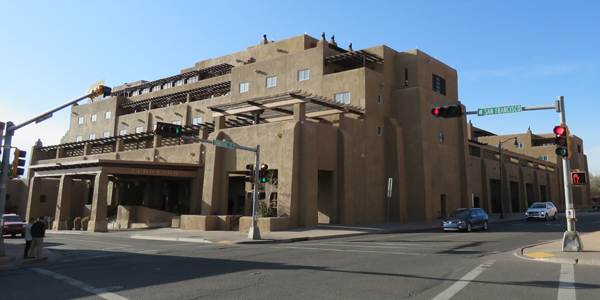By Jason Fordney
SANTA FE, N.M. — In an American West city known for its artists, writers and the beauty of its barren desert environment, state regulators and others last week discussed difficult grid reliability issues and the more vicious side of nature.
New Mexico State University’s annual Current Issues Conference has a reputation as a more informal gathering than other industry gatherings. A major topic at this year’s meeting was the severity of the 2017 hurricane season, in which grid resilience was tested in Texas, Florida and the Caribbean.
Industry consultant Alison Silverstein told the forum that the duration, magnitude and “customer survivability” of electricity outages are metrics that could be used to measure grid resilience. The grid is operated for the benefit of customers, she said, and resilience should be measured in “customer-based” terms.
Silverstein was an author of the Department of Energy grid study released last August but later criticized the department when Energy Secretary Rick Perry used its findings in his proposal that FERC order price supports for coal and nuclear generators with onsite fuel. (See Author of DOE Grid Study Disputes Recommendations.)
Perry’s Notice of Proposed Rulemaking was rejected in January by FERC, which instead opened a new resilience docket.
Silverstein told the forum that the technical conclusions she reached did not align with the department’s contention in the NOPR that coal and nuclear plant retirements were a reliability threat. “They apparently didn’t read the results of their own study,” she said.
Regulators shouldn’t overly focus on generation-based outages because 90% of outages occur in the distribution system, Silverstein said, and big weather events don’t usually affect power plants. Fewer than one in 10,000 customer outage minutes were caused by generation shortfalls.
Coal plants forced to retire since 2002 were old, inefficient and lacked the flexibility that today’s grid needs, Silverstein said. “Regulations were not the cause of the retirements,” she said, adding that fuel diversity has improved in areas where coal plants have retired.
Coal and nuclear subsidies are not the answer and would “cost a fortune,” she added.
There are many ways to improve resilience and reliability, she said, mentioning many of the topics discussed throughout the two days of the forum: distribution system improvements, situational awareness, emergency drills, system recovery and black start capabilities.
“Customer survivability” includes things like backup generators, rooftop solar and emergency supplies like flashlights. “You are already doing a lot of these measures,” Silverstein told the regulators.
Hurricane Response Ongoing, DOE Official Says
DOE Deputy Assistant Secretary Devon Streit discussed the department’s response to the hurricanes and natural disasters of 2017, an effort that is still ongoing. She said the department had response efforts in Texas, Florida, Puerto Rico and the U.S. Virgin Islands.
“We learned that island response is tough,” she said, mentioning not only the difficulties of restoring electric infrastructure in a remote environment but also the challenges of operating without facilities like radar, without which planes cannot land. Ships could not transport electrical equipment because they were carrying food, medicine and other critical supplies.
DOE’s Office of Infrastructure Security and Energy Restoration (ISDER) is responsible for energy sector preparedness and response, including electricity, oil and gas, and cybersecurity. It studies threats and examines hazards as well as holding exercises. It is responsible for communicating with federal and state agencies on what is happening on a near-hourly basis, she said in a presentation.
“We are still active for Hurricane Maria,” a response now in its 236th day, she said.
Streit discussed the value of situational awareness and mutual assistance projects, such as utilities sharing equipment. “What happened in Puerto Rico or Virgin Islands could happen in other places,” she said.
Texas Official Discusses Harvey Response
Public Utility Commission of Texas Chairman DeAnn Walker described how she went to her commission’s State Operations Center to conduct the response during Hurricane Harvey, which she said was “a very, very different storm than previous storms such as Ike and Rita.”
Walker said that in the first time in her experience, mobile substations were brought in because “we had substations flood that had never taken on water the whole time they were built.”
At the operations center, the PUCT worked on grid restoration with utilities and state and federal officials, including DOE, the U.S. Army Corps of Engineers, the Federal Emergency Management Agency and the Department of Homeland Security.
Harvey was the largest rain event in U.S. history, dumping an estimated 40 to 60 inches of water in southeast Texas and southwest Louisiana. ERCOT lost 12,000 MW of generation as gas-fired plants were evacuated or flooded, and coal plants and wind turbines were shut down. (See Weeks Later, Utility Officials Still Awed by Scale of Hurricane Harvey.)







